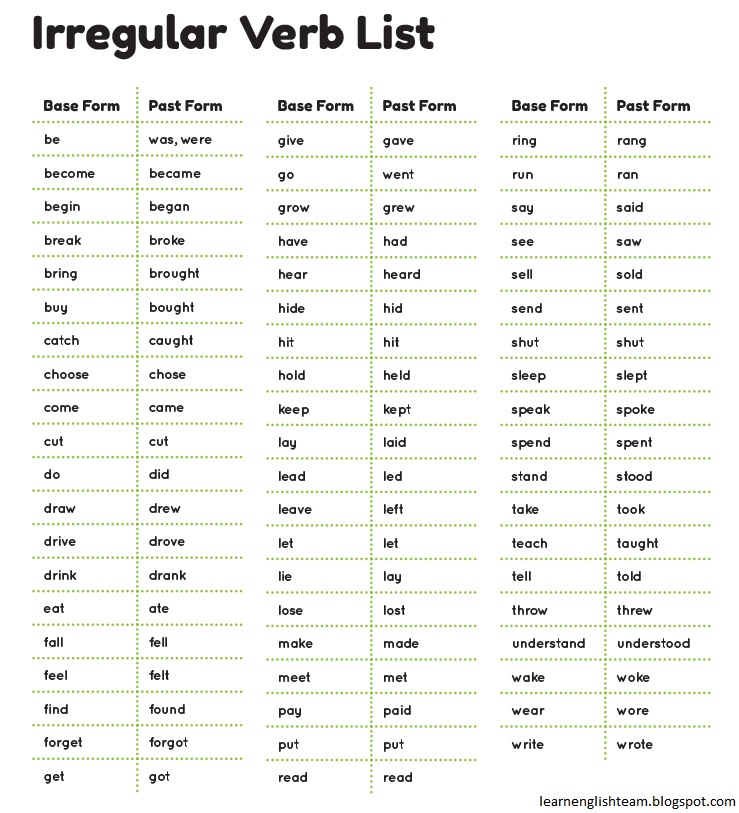

Remember to take things slowly and only learn a few verbs at a time. With our list, you should have a great start to learning the English irregular verbs. In speaking, you’ll mainly hear the most common irregular verbs.
#Full list english irregular verbs free
Use a free flashcard program like Quizlet or Anki to create your own flashcards to help you memorize them.

The mind can only handle so much! Try to learn only a few every day and a limited number of verbs each week.Base FormĮven with the grouping, that’s a lot of verbs to learn! So here are a few key strategies you can use to commit those verbs and their forms to memory. The irregular verbs in Group 4 have different base, simple past, and past participle forms. The irregular verbs in Group 3 have the same base and past participle forms Base Form The irregular verbs in Group 2 have the same simple past and past participle forms. The irregular verbs in Group 1 have the same base, simple past, and past participle forms. So we’ve divided our list of irregular verbs examples into these groups for you. Like any other list you learn in life, it’s always easier to remember if you group everything into a pattern.Įnglish irregular verbs have four distinct (clear) patterns or types. Irregular verbs in English are defined as: verbs that do not follow the pattern of adding -ed in the simple past and past participle forms of the verb.Īs stated before, there are over 200 of them in English and learning them all can be a difficult task. Pronounce verbs ending in all other letters + -ed with a /d/ sound. Pronounce verbs ending in -d or -t + -ed with an /id/ sound. Pronounce verbs ending in -f, -k, -ss, -ch, -sh, or -x + -ed with a /t/ sound. The last letter of the verb will determine how you pronounce it with -ed. Do you know what caused the damage to the roof?.He has carried her books to school since they were six years old.Here are some sentences using regular verbs in these forms: If a word ends in -e, then we just add -d to the end. If the verb ends in consonant + y then change the -y to -i and add -ed. To create the past simple and past participle forms of a regular verb in English, simply add -ed to the end of the verb. Those are the forms that have a different structure with an irregular verb. Before we look at irregular verbs, let’s review the base, simple past, and past participle forms of regular verbs.


 0 kommentar(er)
0 kommentar(er)
